
email us
ted@chattanoogaroofingco.com

call us now
(423) 308-ROOF
roofing
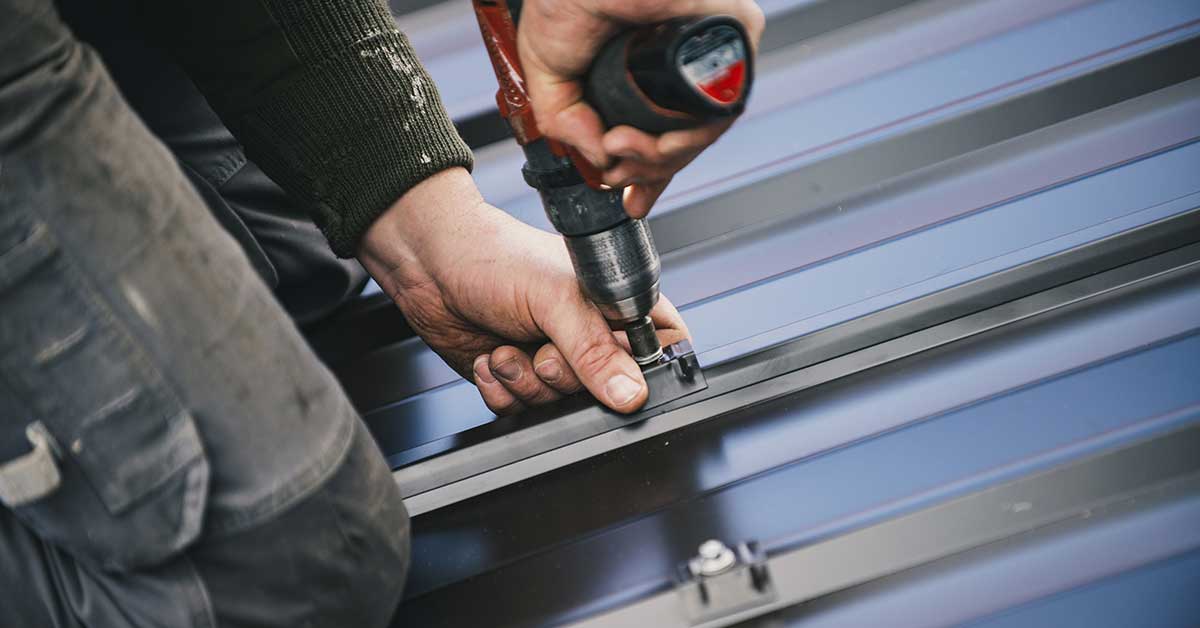
25 May. 2022
What is the Most Energy Efficient Roofing Material?
You have determined that it is time to take care of your roof, perhaps go for a replacement. If you are considering the advantages and disadvantages of several roofing materials regarding their energy efficiency, we have got your back. Energy-efficient roofing systems are just as crucial as long-term durability and maintenance. Installing a roof that saves you money in the long term can help make the decision easier. However, what is the most energy efficient roofing material? Let’s look into that question a bit more.
There are many roofing services on the market that generate heat in your attic, increasing your home’s temperature and your energy costs. This is a good time to consider an energy-efficient roof if you find yourself constantly fiddling with your air conditioner during the hot summer months. This style of the roof may potentially save you money on your monthly utility expenses!
What Contributes to the Energy Efficiency of a Roof?
A low-heat-absorbing roof is a highly energy-efficient roof. Your home’s temperature will fluctuate according to the weather outside, depending on how much heat your roof absorbs. On the other hand, if your roof is built to reflect heat away from your house, you can keep the inside cooler. So, consider the materials and colors used in your roof in order to determine which roofing system is ideal for your home.
What is the Most Energy Efficient Roofing Material?
The type of roof that protects your home has a significant impact on its energy efficiency. There are six common roofing materials.
- Slate
- Wood
- Concrete
- Clay
- Metal
- Asphalt
And while most roofs are energy efficient, some roofing designs perform much better than others. The following are the top three most energy-efficient roofs available on the market.
Clay and Concrete Tile Roofs
When properly installed, clay tile roofs conserve energy. The overlapping of the tiles produces channels for airflow and circulation in this roofing style. Apart from the extensive color and style options offered to consumers, this roofing system is highly popular among homeowners in arid parts of the world. However, in the United States, clay and concrete roofing is uncommon.
Metal Roofs
Metal roofing is the most energy-efficient roofing material currently available. Because metal gets heated to the touch, you may initially consider it an inappropriate choice; yet this is precisely what makes it an excellent option. Since metal is highly reflective and emissive, UV rays from the sun are reflected away from the house. Metal roofs are also fire resistant, with an expected lifespan of more than 50 years.
Asphalt Shingle Roofs
There are several types of asphalt shingle roofs that can be used to build an energy-efficient roofing system, but not all asphalt shingles are the same, and the great majority of asphalt shingles on the market today can’t match the energy efficiency of metal roofs due to their lack of reflectivity. When looking for the perfect asphalt shingle roofer, ensure that they use shingles coated with energy-efficient materials.
To speak with a roofing professional about replacing your roof with an energy efficient material, call Chattanooga Roofing today!
- By: chattroof
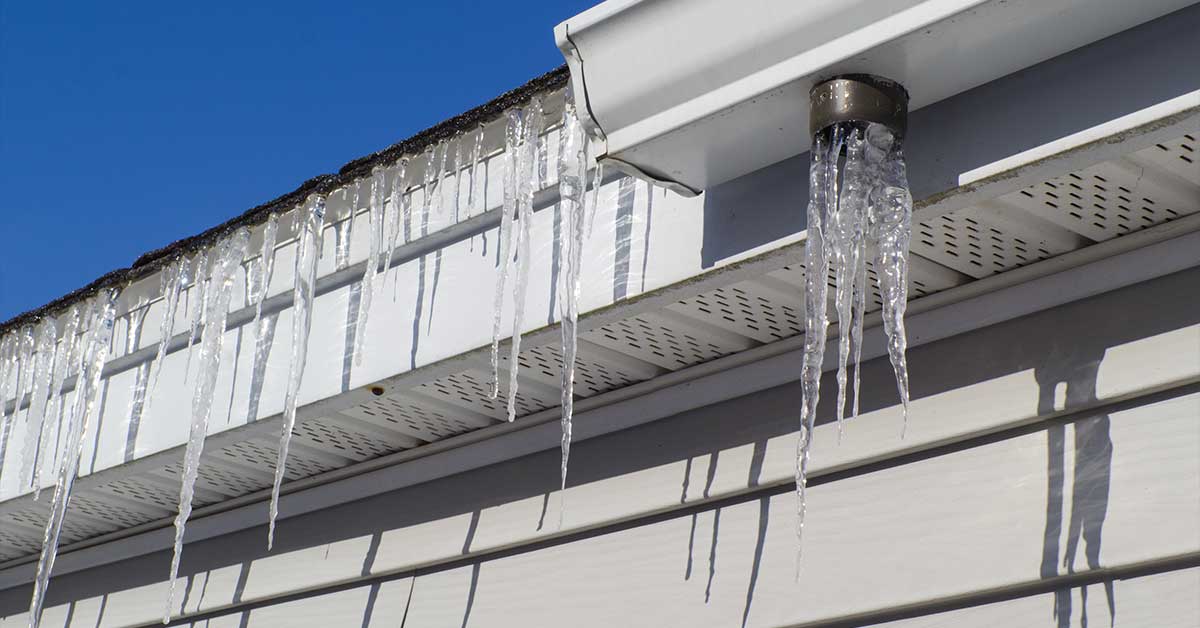
24 Feb. 2022
How Do Ice and Snow Hurt My Roof?
Ever wonder, “how do snow and ice hurt my roof?” During the harsh winter months, a load of snow and ice on your roof can have a direct impact on its condition and structure. It is critical for homeowners to thoroughly grasp the indicators of weather damage, recognize these signs, and take the appropriate procedures to fix your roof if it is damaged as a result of severe weather.
You might be thinking, “Why does this matter to me? We barely ever get snow in Chattanooga.”
You’re right about that. However, ice can be a problem if it’s not normal for your roof and we hit a cold snap after rain.
So here are some things to keep in mind while it’s freezing outside.
How Do Ice and Snow Hurt My Roof?
Ice Dams
Ice dams can form on the roof if enough ice accumulates. As the snow melts, it flows down the roof and freezes at the roof’s edge. Ice dams may rip gutters.
Freeze and Thaw
Snow and ice buildup can cause cracks. Water seeping into even the smallest openings can also do severe damage to your roof. This can create leaks into your home and exacerbate existing cracks. If the water doesn’t leak and freezes, the crack can widen, causing more damage.
Gutter Damage
When air temperatures are below freezing, gutters clogged with leaves, mud, or other debris increase the creation of icicles, but sunlight warms the external surfaces of your property. Icicles are pretty heavy, and they can cause damage to your gutters and roof.
Leakage and Skylights
Snow and ice can obstruct holes around skylights to release condensation. Moreover, water damage to structural components and ceilings can result from trapped condensation.
Preventative Maintenance is Essential
Therefore, all you need is to go for regular roofing inspections, gutter cleaning, snow removal, replacing damaged shingles before winter storms arrive. For that reason, this winter, reach out to Chattanooga Roofing Co. for assistance. We can provide you with the peace of mind that comes from knowing that we took care of your roof.
- By: chattroof
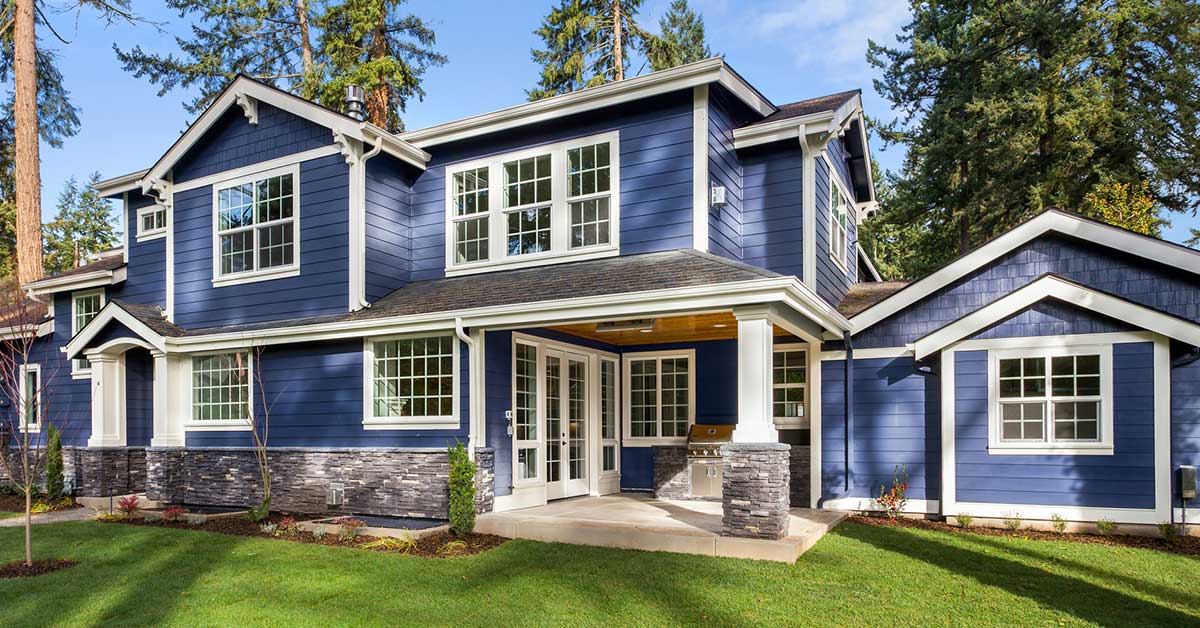
17 Dec. 2021
How a New Roof Can Help Save on Energy Costs
Is a new roof going to save you money in the long run? That’s an easy yes. But you may wonder how a new roof can help you save on energy costs. The answer is that installing a new roof will help you save money on your monthly utility bills by making your home more energy-efficient. Instead of using modern roofing materials and techniques, older roofs were constructed using … well, “old” ones. To put it another way, older roofs are less energy-efficient and place a larger burden on your heating and cooling system, resulting in higher energy bills.
How a New Roof Can Help Save on Energy Costs
When trying to figure out if a new roof will save you money, there are a few things to keep in mind. It’s not as simple as just putting up a new roof. There is a wide range in the energy efficiency of roofs, depending on the type of material.
When building a new energy-efficient roof, here are a few things to keep in mind:
1. Solar Reflection
The more solar light your roof blocks, the more energy-efficient it is. You can’t keep sunlight from coming into your house if your roof doesn’t reflect it away. The shingles then take the heat from the sun and move it into your house. Roofs that reflect a lot of the sun’s rays can lower the surface temperature by as much as 30%.
2. Roof Ventilation
In order for the attic to get enough air and expel heat, roofs have vents built-in. Hot air can build up in the attic of a house if the roof isn’t properly ventilated. This can cause your whole house to slowly heat up like an oven over time. These things put a lot of strain on your home’s cooling system and make it more expensive to run. Ensuring the roof is properly ventilated will help your home use less energy and use less air conditioning.
3. Shingle Color
On a bright day, dark clothing absorbs heat, but did you know that dark shingles may do the same thing? Depending on where you live and the environment, the color of your roof should change. Cold-weather zones benefit from darker shingles, while hot climates need lighter roof colors to help reflect sunlight from heated areas. The color of your roof’s shingles can have a significant impact on the amount of money you spend on energy.
Do you have questions regarding your roof? Don’t hesitate to call Chattanooga Roofing Company at (423) 888-0258. We will be glad to answer any questions you have.
- By: chattroof
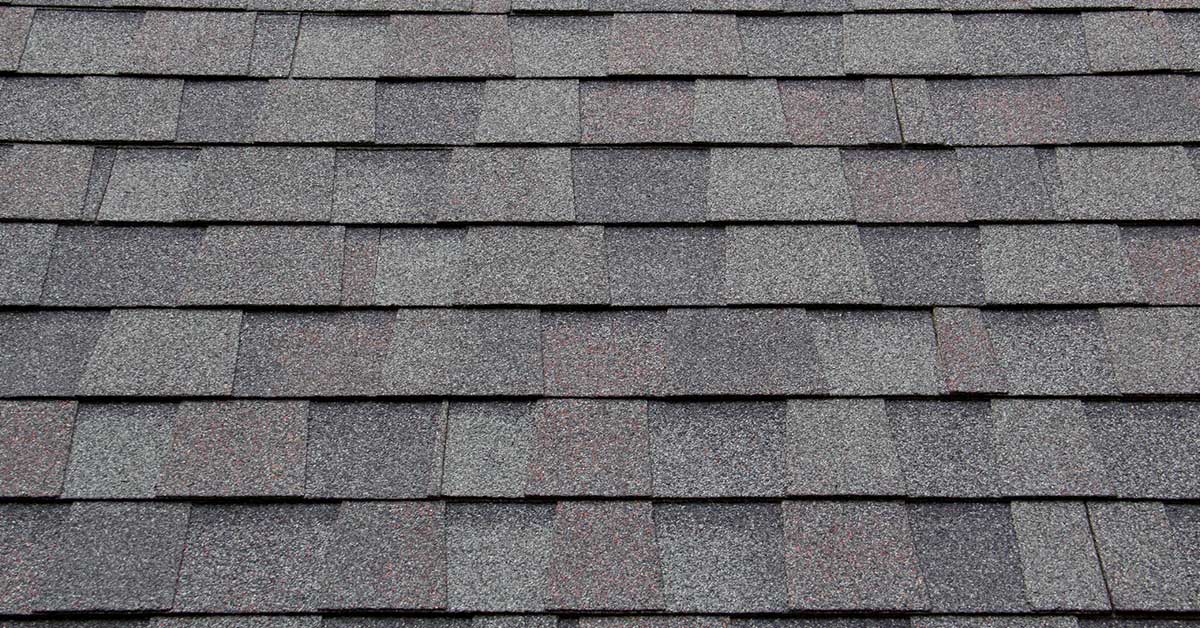
18 Nov. 2021
What Are the Common Problems With Asphalt Shingles?
Many homeowners are debating whether or not they should go with an asphalt shingle roof. One common question is, “what are the common problems with asphalt shingles?” Most homeowners in the United States use asphalt shingles as their primary roof covering. This is largely because they’re inexpensive and easy to install. This form of roofing has a few drawbacks that should be considered before making a decision.
In this article, Chattanooga Roofing Co. provides an overview of the 5 most common asphalt shingle problems.
5 Common Problems With Asphalt Shingles
1. Life Expectancy
The lifespan of an asphalt shingle roof is significantly lower than that of nearly every other form of roof. As a rule of thumb, asphalt roofs endure between 10 and 20 years before they need to be replaced.
2. Roof Repairs
Asphalt shingle roofs do not have a good reputation when it comes to long-term dependability. The shingles will need to be repaired or replaced if they are damaged by extreme weather or aging.
3. Gloeocapsa Magma
Gloeocapsa magma is a microorganism that looks like green-blue algae. It can cause ugly black streaks on your asphalt shingle roof.. In addition, gloeocapsa magma can damage shingles and reduce their lifespan. Asphalt shingles include limestone that bacteria chew away over time, thus weakening the shingles. A roof with weak shingles is more prone to require repairs due to shingles breaking or flying away.
4. Color Limitation
Grays and browns are the most frequent colors for asphalt shingles. Asphalt shingles come in a restricted range of colors. For that reason, with this roofing material, it will be tough to achieve a unique roof in a vivid hue.
5. Blistering
Blistering of the shingles can occur on a poorly ventilated shingle roof. The blisters grow as a result of the blistering caused by the extreme heat. Blisters on shingles cause the granules that act as a protective barrier to loosen, reducing their effectiveness. You should replace shingles that have blistered excessively because this can shorten the lifespan of your roof.
Do you have questions regarding any of the common problems with asphalt shingles? Call Chattanooga Roofing Co. today at (423) 799-2173. We have professionals who will be glad to answer any questions you may have.
- By: chattroof
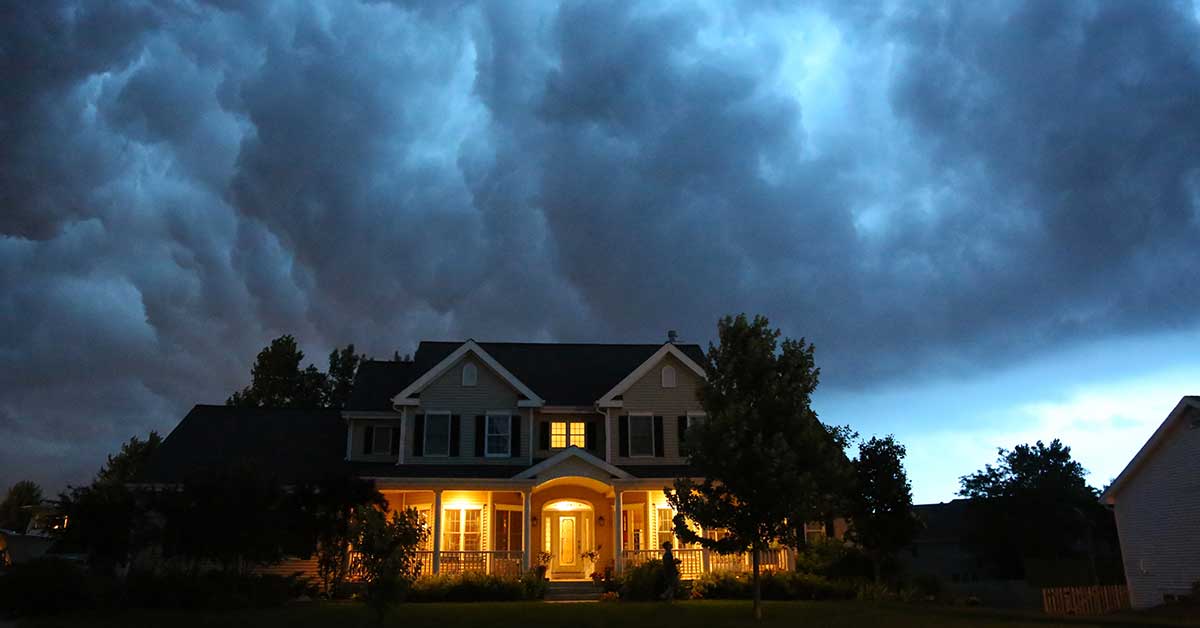
20 Jul. 2021
How Do I Protect My Roof from Summer Storms?
Like many homeowners during thunderstorm season, you might be asking “how do I protect my roof from summer storms?” Aside from the heat, we also need to deal with storms during the summer. You need to prepare your home. Why? Because these storms cause strong winds and heavy rains that could wreak some serious havoc on your roof. The roof serves as your first and last line of defense against extreme weather. For that reason, you need to make sure it can withstand the strongest of storms. The goal is to prevent water and property damage.
How Do I Protect My Roof from Summer Storms?
The first thing you need to do is to inspect your roof. Look for leaks inside the house, and watch out for damaged shingles from the outside. Also check the exterior features of your roof for damage. This includes your chimney, vents, skylights, fascia, and soffit.
If you are not able to conduct a full inspection, you can ask a roofing company to do a professional assessment on the current state of your roof. Doing so allows you to spot problems early on and have them fixed. That way, your roof will be 100% able to protect you when the next storm rolls in.
The second step is to clean your gutters. Your gutters won’t be able to successfully divert rainwater away from your house if they are clogged. To ensure that water comes off easily from your roof during a heavy downpour, remove fallen leaves, loose asphalt granules, and other debris from your gutters. You also need to trim the trees on your property to prevent branches from falling on your roof in the event of a heavy storm.
Secure exterior furnishings in the event of a storm. Your patio furniture, hammock, flower pots, external lights, and many more should be secured in their place or be brought inside so as not to damage your property.
The last – and most important – step is to call Chattanooga Roofing Company at (423) 888-0258. Any small problem – a small leak, a torn shingle, or a broken skylight – can turn into a bigger one if left unattended. Hiring a roofer will save you money in the long run because you’ll have a roof above your head that can withstand extreme summer storms.
- By: chattroof
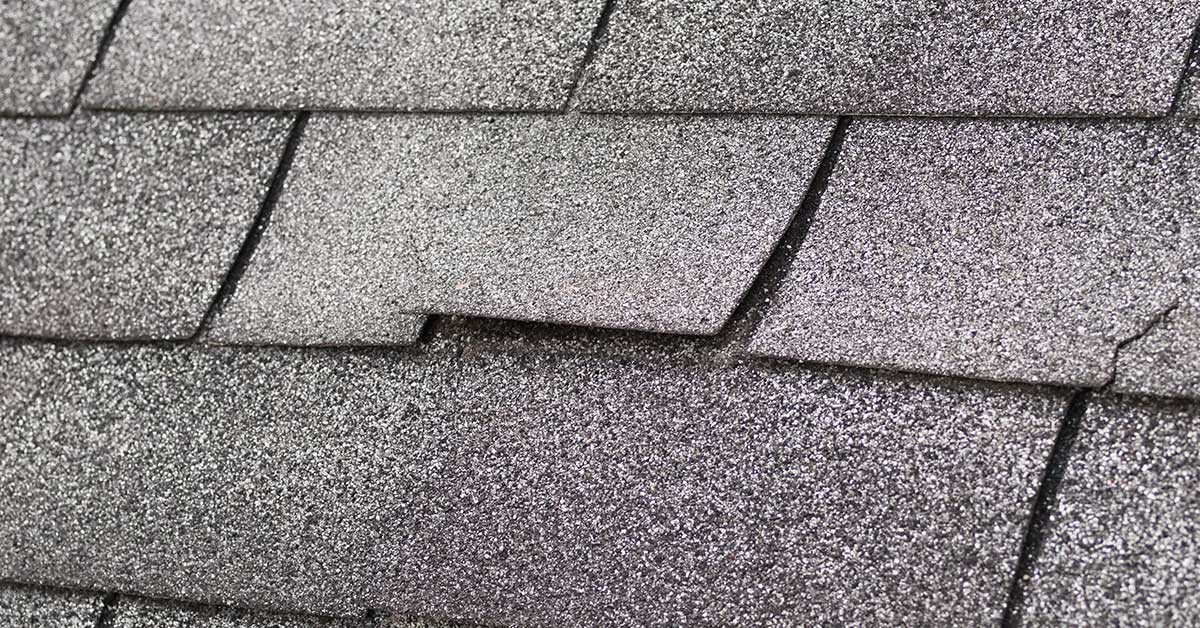
28 Jun. 2021
Why is a Leaky Roof Dangerous?
Do you see water stains coming from your attic that extend across your ceilings and run down on your walls? These are obviously major signs that you have a leaky roof. It is imperative that you have your roof inspected and these leaks repaired immediately. But, why is a leaky roof dangerous?
Even if it does not bother you too much or if you’re already planning a home renovation down the road, a small leak can lead to bigger problems if left untreated. It could lead to rotted framing and wall materials, as well as damaged insulation and ceilings.
Here are the signs of a leaky roof that you should watch out for:
- Dark spots
- Sunlight streaks
- Warped shingles
- Clogged gutters
- Mold growth
- Loosened chimneys/vents
- Higher energy bills
That should answer the question, “why is a leaky roof dangerous?” If you notice any of these signs, hire a roofing contractor to diagnose then fix the issue. If the leaks are big, don’t try to fix it on your own. There’s only so much you can do to manage the situation, and a professional roofing expert can have the leak repaired more quickly than you do.
How Do You Prevent a Leaky Roof?
To prevent leaks from happening, you should have your roof inspected at least twice a year, preferably before the start of heating and cooling seasons (fall and spring).
Doing this will ensure that your roof stays in good shape. It will help you get small problems addressed quickly, and prevent potential big problems from happening.
Repair Your Roof Leak Today
Leaky roofs never fix themselves, nor do they get better on their own. Postponing the repair work for later will only make the problem worse, the labor more intensive, and the repair more expensive.
A roof leak can cause a huge inconvenience to your household. If you are in need of leak repair, please call Chattanooga Roofing Co. at (423) 888-0258 for more information.
- By: chattroof
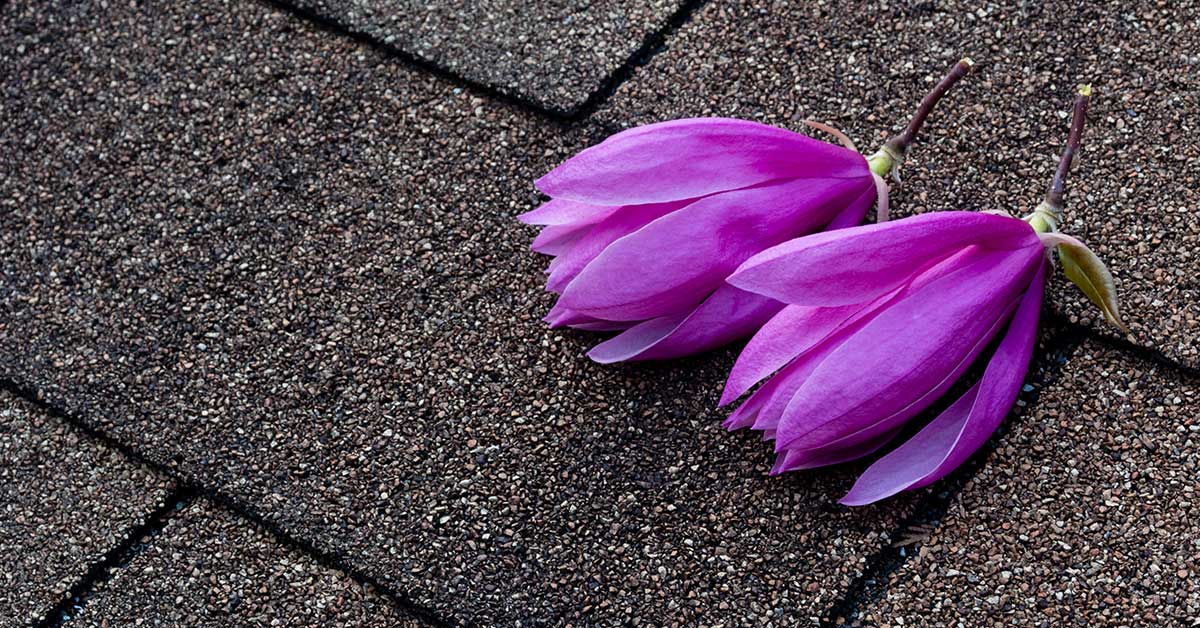
26 Apr. 2021
Is It Important to Keep Pollen Off My Roof?
Now that spring is here, expect the annual flooding of pollen all over your property. Are you wondering is it important to keep pollen off my roof? Don’t be surprised if your roof and siding get suddenly covered in yellowish dust.
When it comes to spring cleaning, most homeowners neglect the roof above their heads. That is because removing pollen from one’s roof is not a spring activity most people look forward to doing.
Unfortunately, pollen can cause health hazards, unsightly stains, and costly roofing issues that could have been easily prevented in the first place.
1. Target the Right Places
Aside from closing your doors and windows and installing HEPA filters, you also need to have your roof checked by a professional roofing contractor. This way, they can check if your roof has become an entry point for pollen. The contractor will make sure that the attic insulation and air vents have been properly installed and functioning properly.
2. Clean the Roof
You can rely on rain and time to help remove pollen build-up. But if there’s huge amounts of it, it may be time to get up on the roof and remove the pollen. However, there’s a risk of getting injured while you’re up there if it’s a steep roof or you’re less mobile than you used to be. In that case, you’d be better off leaving the cleanup to the roofing professionals.
3. Update Your Roof
If your roof has been retaining more pollen than usual because of pitting or curled shingles, then it may be time to have it replaced. Old, decaying asphalt roofs are more likely to catch allergens as they age. Check with your local roofer to see if your roof is up for a replacement, or if they can still do repairs.
Contact Us Today for Roof Repair
Spring is definitely the worst time of year for pollen to collect on your home, especially on your roof.
Removing pollen from your roof may help lessen your allergy symptoms, which is why you should make roofing maintenance a part of your spring cleaning checklist.
To learn more about our spring maintenance services, please contact Chattanooga Roofing Company. Just call us at (423)-401-2448 today.
- By: chattroof
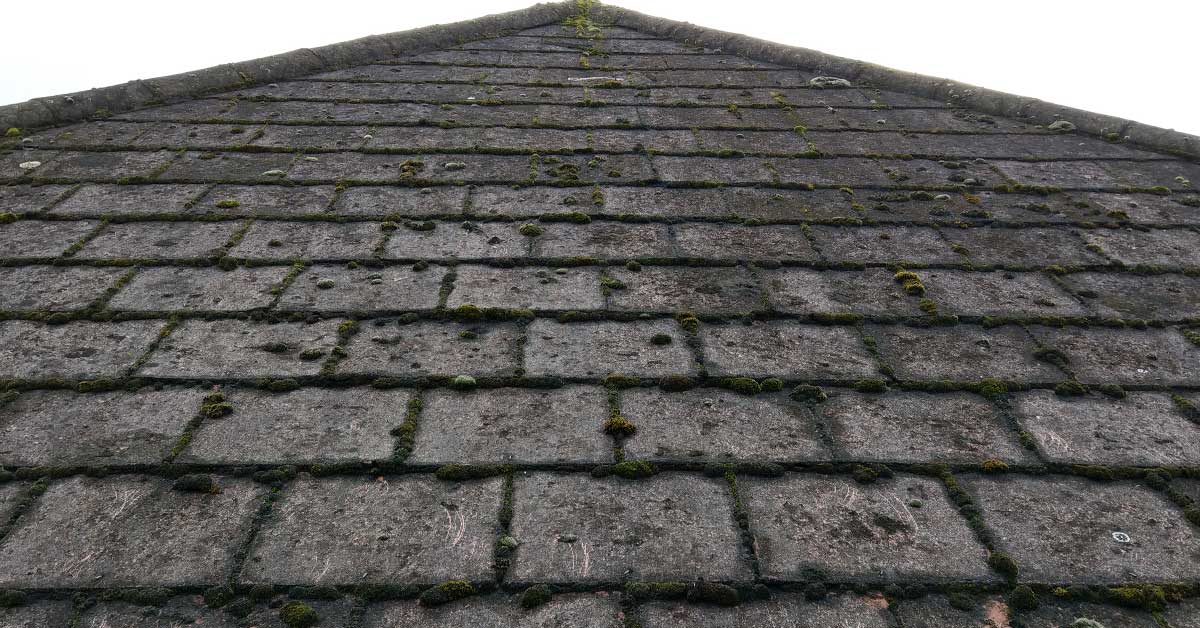
19 Feb. 2021
Why Your Roof Looks Dark and How to Prevent It
Have you been doing a spot check of your asphalt shingle roof and noticed some dark streaks all over it? It could be a combination of many things — accumulated dirt, damaged shingles, or mold. You may be wondering why your roof looks dark and how to prevent it. Let’s look into this a bit more, and hopefully you’ll know how to fix it when this article is done.
More often than not, the culprit is actually a blue-green algae known as Gloeocapsa Magma. The spores of this algae are airborne and can be carried over to your roof by heavy and strong winds. The crushed limestone filler used in your asphalt roof will serve as their main food source. The hot and humid summer experienced in the southeastern part of the US will also contribute to the algae’s growth.
Although the algae won’t harm your roof in any way, its presence could be a major eyesore to an otherwise cozy home. This algae begins as small spots on your roof, but if left unattended, the spots become long streaks of monstrosity.
Removing the Dark Algae Streaks on Your Roof
We’ve talked about why your roof looks dark, and how to prevent it is next up. To prevent this algae from marring your home, you can ask your roofing contractor to choose an algae-resistant roof if you are in the process of a roof replacement.
However, if your existing roof has already been affected by this algae, there are lots of chemical cleaning agents that can be used.
Take note that there will be risks involved in cleaning your own roof. Going the DIY route could void your roof warranty or homeowner’s insurance policy. In addition, you may not have the right roof cleaning materials. You also might not have the spare time to clean. And, even if you do, you could end up hurting yourself in the process.
Cleaning your roof is better left in the hands of professionals. For a consulation about removing those ugly black streaks, please contact Chattanooga Roofing Company at (423) 401-2448 today.
- By: chattroof
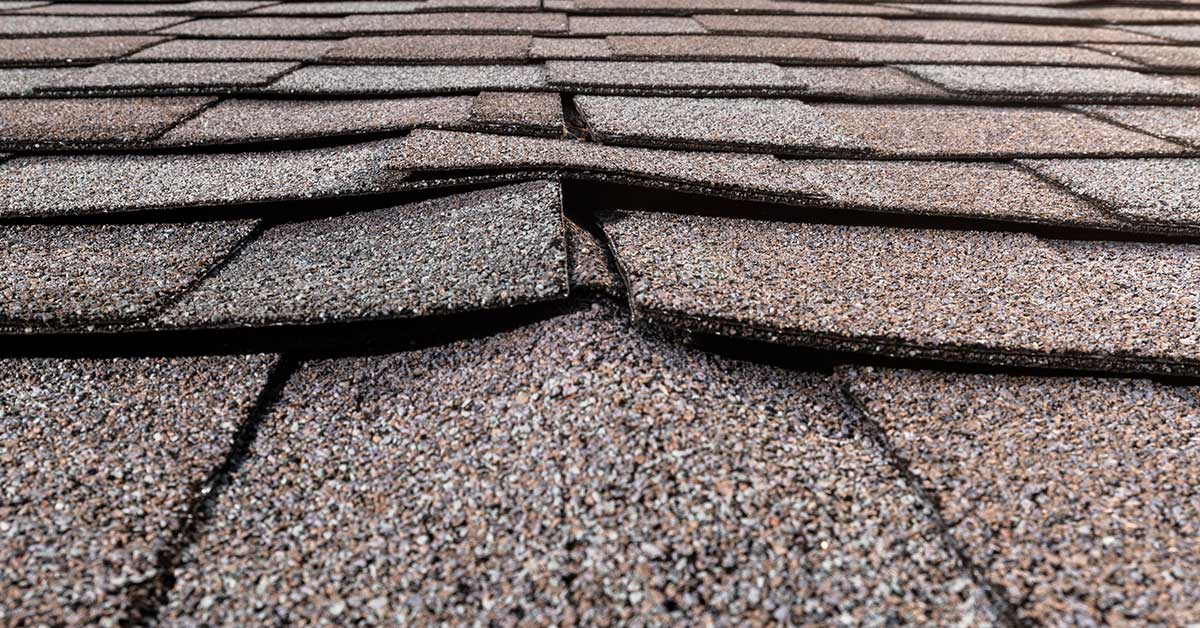
21 Jan. 2021
What are the Problem Areas of Your Roof?
If your roof is getting on in age or has not been maintained for quite a while, we recommended that you inspect it for damage. Doing so prevents the problem from worsening and saves you from spending lots of $$ in repair. But in order to do so, you have to know what are the problem areas of your roof.
What are the Problem Areas of Your Roof?
Here are the top 4 areas you need to watch.
1. Fascia and Soffit
The fascia is a piece of trim that runs along the edge of a roof to create a more smooth, polished appearance and to protect the edge from the weather elements.
A soffit is placed underneath the eaves to keep moisture away from the rafters.
Both of these could be potential problem areas so inspect them regularly and look for holes and cracks where moisture and pests can come through.
2. Flashing
Roof flashing is made of galvanized steel and helps seal your roofing system by directing water away from critical areas of the roof such as chimneys, vents, and skylights.
However, it could get torn down by a strong wind or get oxidized in the long run. Damaged flashing can cause moisture to come inside the roof seams and cause water leaks.
3. Gutter
A gutter collects rainwater down through a downspout and diverts it away from a home’s foundation. If you don’t maintain it well, your gutter could clog. Leaves, twigs, and other debris can all contribute to that clog. If the load becomes too heavy, the gutter could pull away and separate from the rest of your home.
4. Shingles
Shingles make your roof easy on the eyes. They also serve as another protective layer for the underlayment and other parts of your roofing system. However, high winds can pry these shingles apart and extremely hot weather may cause them to curl or loosen up.
If you spot any damage within these areas, make sure to call a roofing contractor so they can be fixed right away. Chattanooga Roofing Company is here to answer any questions at (423) 888-0258.
- By: chattroof
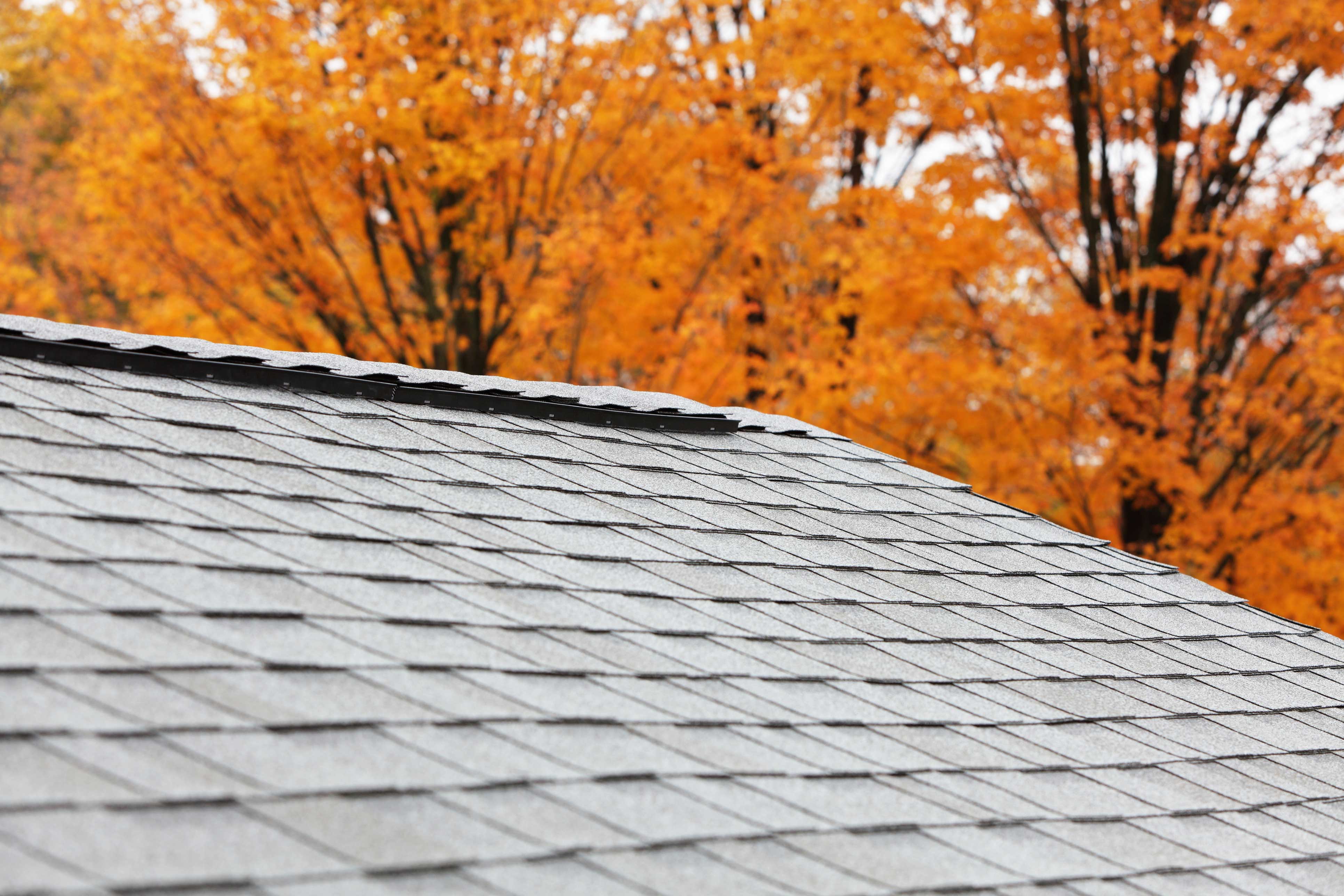
21 Oct. 2020
Is Fall a Good Time to Replace Your Roof?
If your roof is starting to fall apart, you’ve got to replace it sometime soon. And fall may be the best time to have it repaired or replaced by a professional roofing company. But why is fall a good time to replace your roof? What makes this season ideal?
1. Weather Conditions Are Perfect
A roof is best replaced during a clear day, when the weather allows the shingles’ seal strips to melt and adhere properly. Shingles become more difficult to work with during hot and cold weather. In addition, humid weather and freezing temperatures cause the shingles to need more time to set and form an airtight barrier.
For this reason, you need to have your roofing project done now before temperatures start to drop. By getting it done in the fall, the shingles will have more than enough time to bond to the roof. You’ll be ready before wintry weather arrives.
The weather is also more forgiving during fall. Spring and summer can bring heavy thunderstorms, while winter brings cold weather. These conditions can make it difficult for the roofer to get the job done right away.
2. The Roofing Redo Can Follow a Grueling Summer
Your roof took a major beating from the sun during summer. You may be able to spot the occasional loose shingle. However, damaged flashing, chimney, or eaves can be harder to spot and may need the help of a professional. Fall is the ideal time to have your roof inspected to determine if a repair or replacement is in order.
3. Roof Replacement Prepares You for Winter
If you have existing damage to your roof, the coming winter storms and the weight of snowfall will only exacerbate the problem. For that reason, act right away. That way, once the winter weather rolls in, you won’t have to worry about leaks and ice dams. Your loved ones will remain cozy, warm, and comfortable inside – despite the cold weather. And you may also get to save on heating costs.
So when is the best time to replace your roof? The best time is now, while you still can. Don’t put off the replacement because your problems could get worse. If you do, you might end up having to pay a whole lot more.
To get started on a roof replacement for your home, please contact Chattanooga Roofing Company at (423) 888-0258 for a consultation with an expert.
- By: chattroof
visit Us: 529 S. Germantown Rd. Chattanooga, TN 37411
email us: ted@chattanoogaroofingco.com
24/7 Emergency call (423) 308-ROOF

